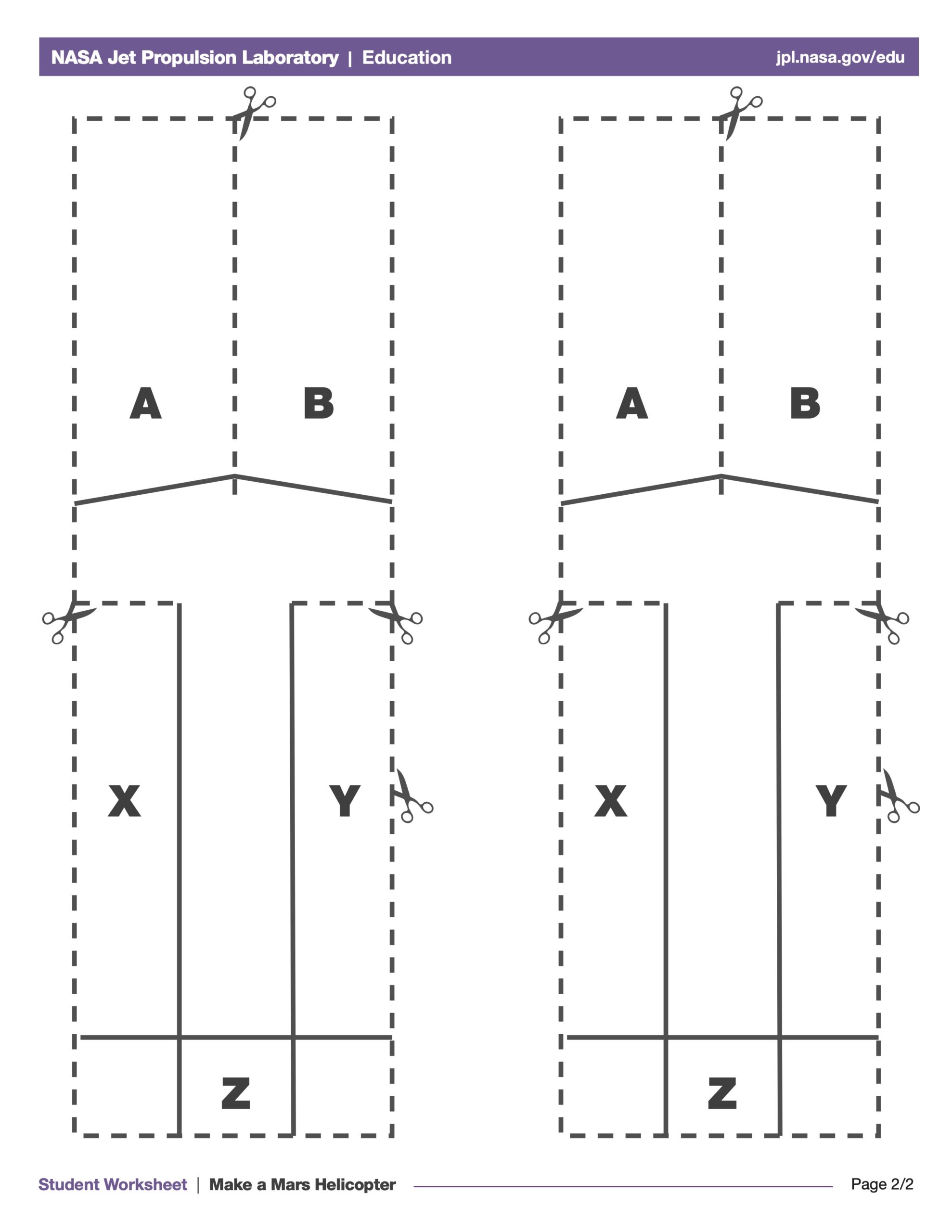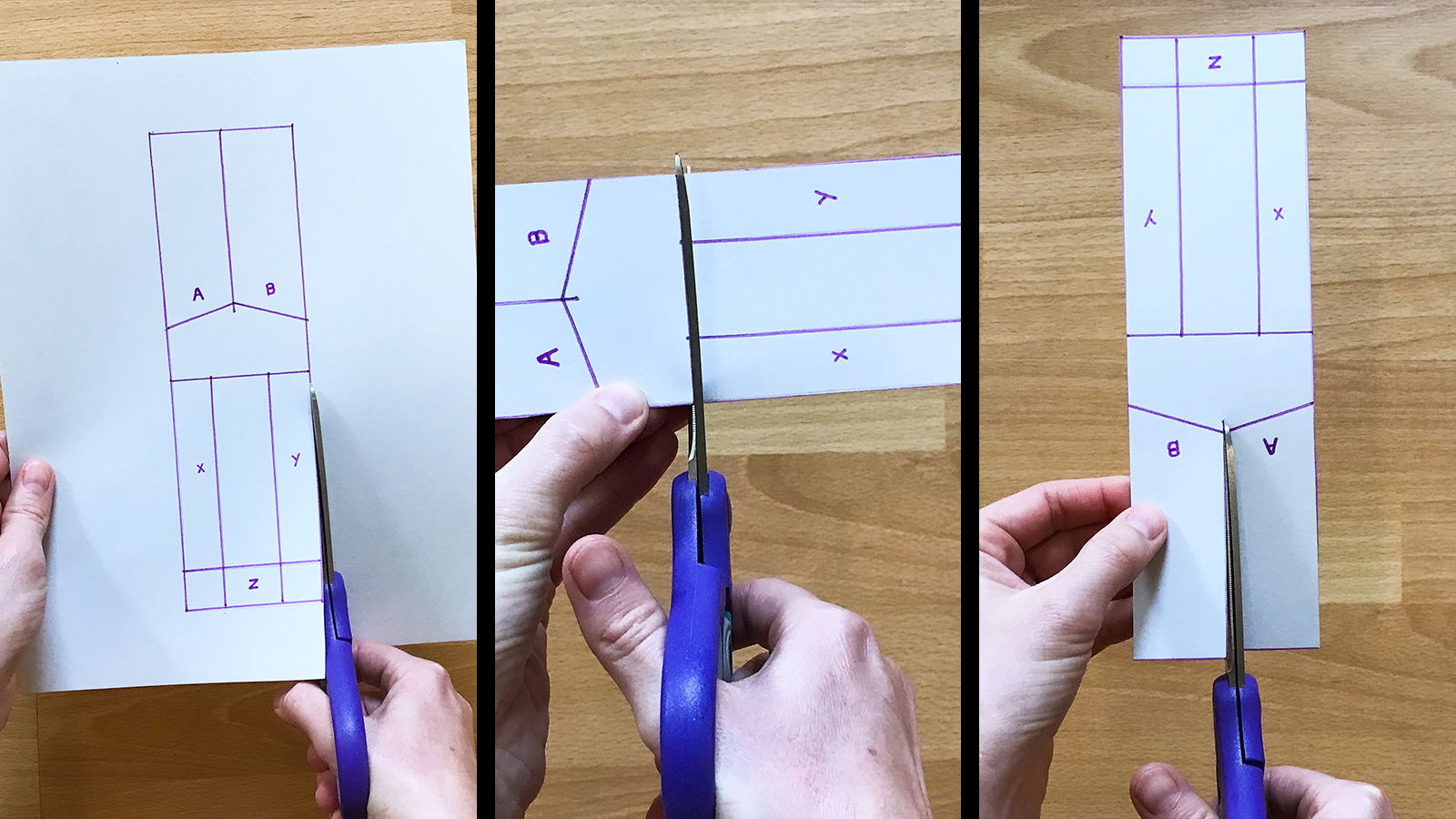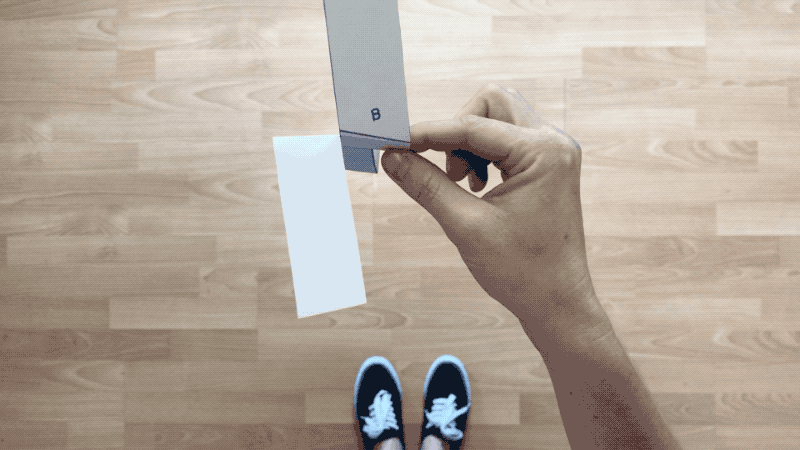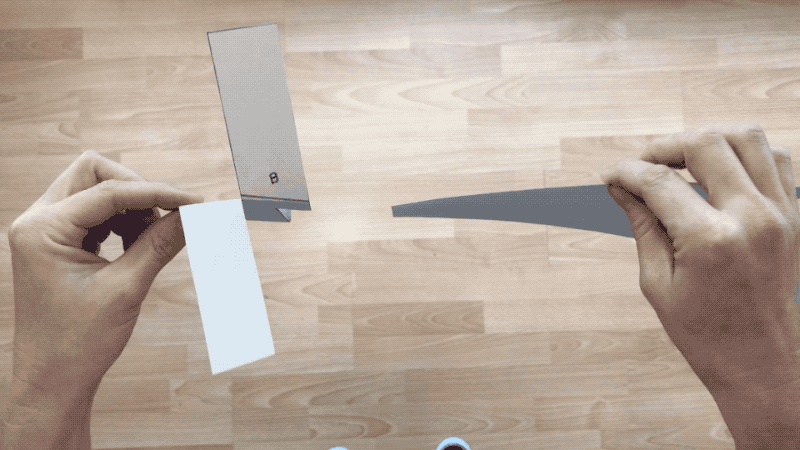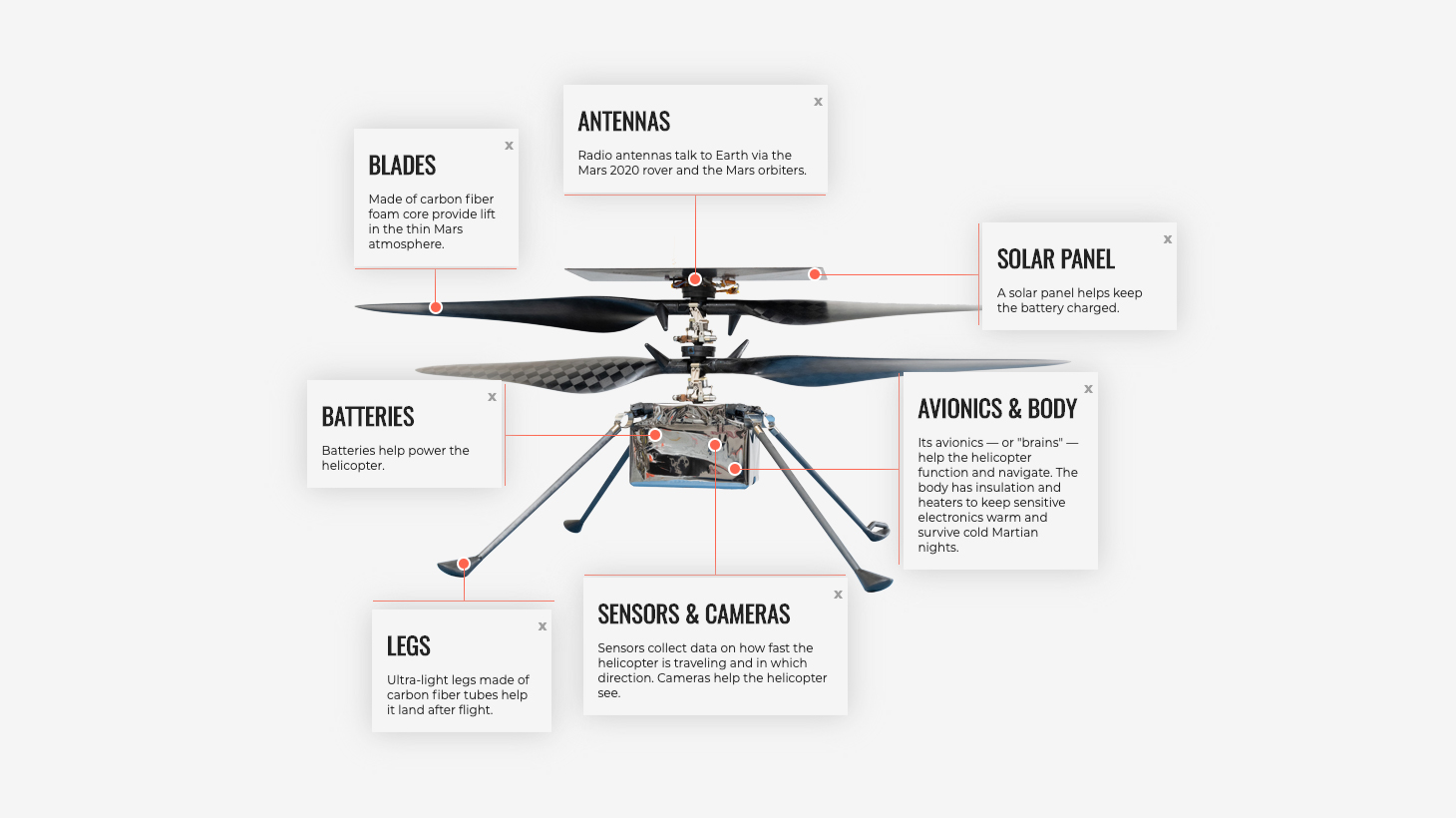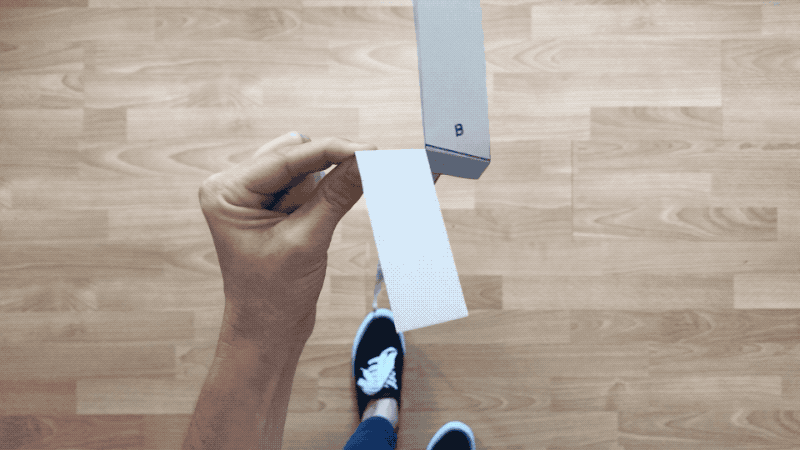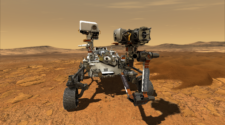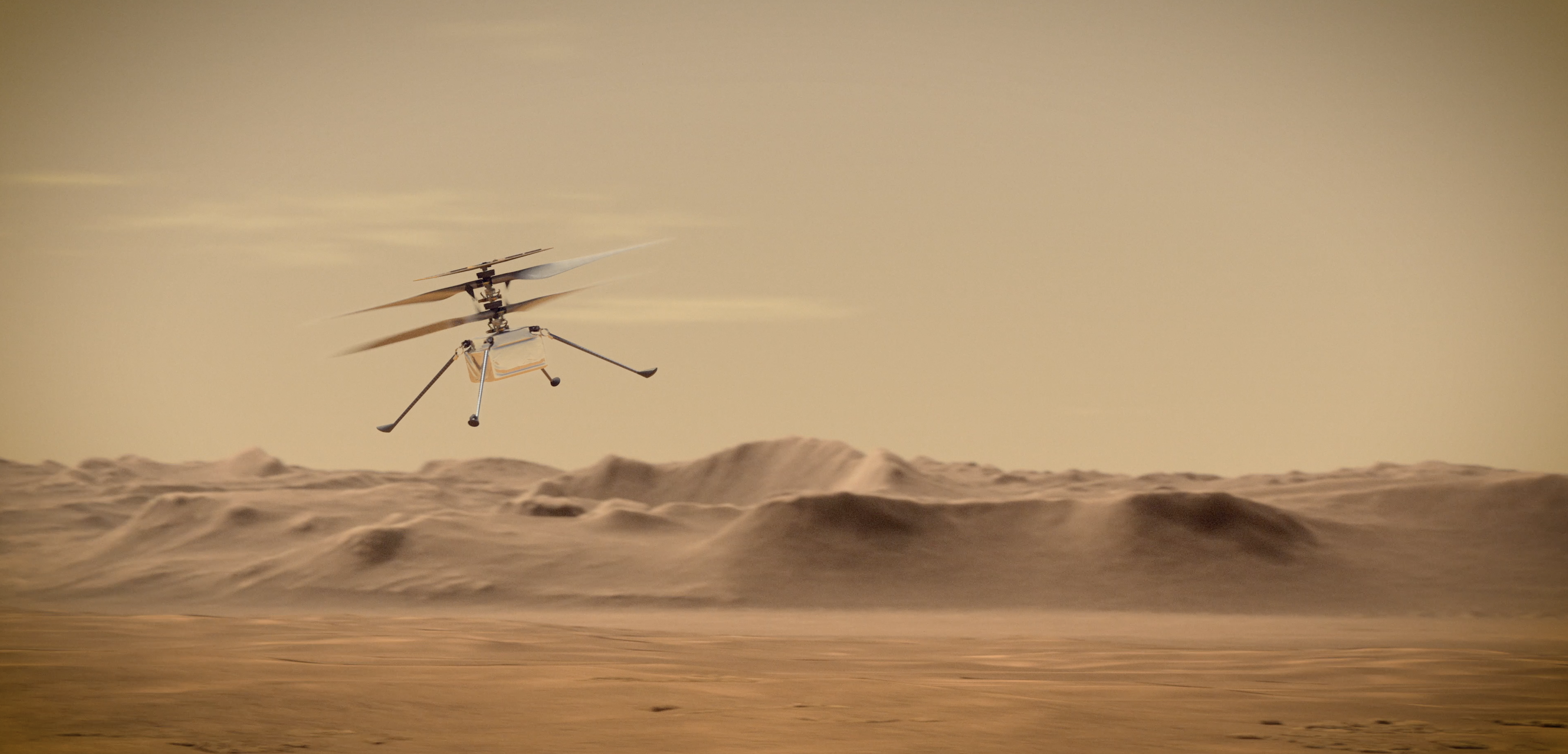
NASA’s Perseverance Mars rover, launching in July 2020, will carry the first helicopter to the surface of Mars! This helicopter has to be super lightweight to fly on Mars. It also needs large blades that can rotate really fast so it can generate enough lift to overcome the gravity of the Red Planet and lift off the ground.
In this NASA/JPL-Caltech activity project, you will build a paper helicopter. Then, just as NASA engineers had to try out different versions of the Mars helicopter before coming up with a final design, you will experiment with the design of your helicopter to see what works best.
Watch the Tutorial
In this episode of Learning Space, you’ll learn how to build a paper helicopter, then see if you can improve the design like NASA engineers did when making the first helicopter for Mars. | Watch on YouTube
See below for materials and step-by-step instructions. For more video tutorials and activities like this one, visit Learning Space.
Materials
• Plain paper OR a copy of the template – Download PDF
• Scissors
• Measuring tape
• Pencil
• (Optional) 3-meter (10-foot) length of lightweight ribbon or smartphone camera
* Don’t worry if you don’t have all of the materials. Get creative and substitute materials with what you have! It’s all part of the design process.
1. Cut out the helicopter
Cut along the dashed lines of the template. If you’re using plain paper, make a sketch of the helicopter solid and dashed lines as a guide.
2. Fold along the solid lines
The propeller blades, A and B, should be folded in opposite directions along the solid lines. The X and Y panels fold toward the center, and Z is folded upward to give the body of the helicopter rigidity and lower its center of gravity for more stable flight.
3. Do a test flight
Stand up and hold the helicopter by its body. Raise it as high in the air as you can. Now, drop it. What do you observe? Which way do the blades turn? Drop the helicopter from a higher spot. (Climb a few stairs or stand on a step stool.) How does the performance change?
4. Compare
Grab an unfolded piece of paper the same size as the one used to make the helicopter. Drop it at the same time as the helicopter. Which falls faster? Wad up the piece of paper into a ball. Drop this paper ball at the same time as the helicopter. Which falls faster? Can you guess why? Hint: It has something to do with air resistance.
5. Experiment
Make one change to your helicopter. Try folding the bottom up one more fold, or shortening or changing the shape of the blades. How does the performance of your helicopter change? Why? Can you figure out a way to make your helicopter blades turn faster or slower?
6. Make a new model
To make the Mars helicopter, NASA engineers had to build and test multiple designs to find something that could get enough lift from the Red Planet’s thin atmosphere.
Lift is a force that is generated when the slightly angled moving blades of the helicopter encounter air particles. This increases the air pressure on the bottom of the blades. And the increased air pressure forces the blades and the entire helicopter up into the air. When there are fewer air particles in the atmosphere, less lift is generated. Mars’ atmosphere has only 1% of the particles of Earth’s atmosphere. This means that blades that generate enough lift on Earth won’t work on Mars.
To generate enough lift for the Mars helicopter, engineers gave it two sets of enormous blades that are 4 feet (1.2 meters) across and rotate about 10 times as fast as those of helicopters on Earth.
Think about how you want to improve the performance of your helicopter and make another one that is different from your first. Use a different kind of paper or make a much smaller or much larger one. How big of a helicopter can you make that will still work? How small of a helicopter can you make? How do helicopters with different blade sizes compare in performance? What size works best? How do you define “best performance”?
7. Reverse it
Notice which way your helicopter blades turn. Is it clockwise or counterclockwise? Is this consistent for all of your helicopters? What is a single change you can make to your helicopters to make them spin in the opposite direction?
8. Count the rotations
Measure the height of your shoulder and write this down. Choose your best-performing helicopter and drop it from shoulder height. Count the number of rotations it makes before landing. If counting the rotations is difficult because of the speed, either record a video of the drop and play it back in slow motion or attach a straightened ribbon to the bottom of the helicopter body. You can count the twists in the ribbon after it lands. Record this number next to the drop height.
9. Repeat
What would happen if you dropped the helicopter from a lower height? Repeat the measuring, dropping and counting from a lower height.
10. Predict
How many times would the helicopter rotate if you dropped it from a taller height? Measure a taller height, and then predict the number of rotations your helicopter will make.
11. Test your prediction
Drop your helicopter from the taller height and see how close your prediction was. Try again from other heights and see if you can make better predictions each time!
Explore More
Explore the wonder of space exploration from home but visiting these NASA educational websites.
• NASA STEM at Home for Students
• 10 Things to Do With NASA at Home
• Standards-aligned lessons for educators

